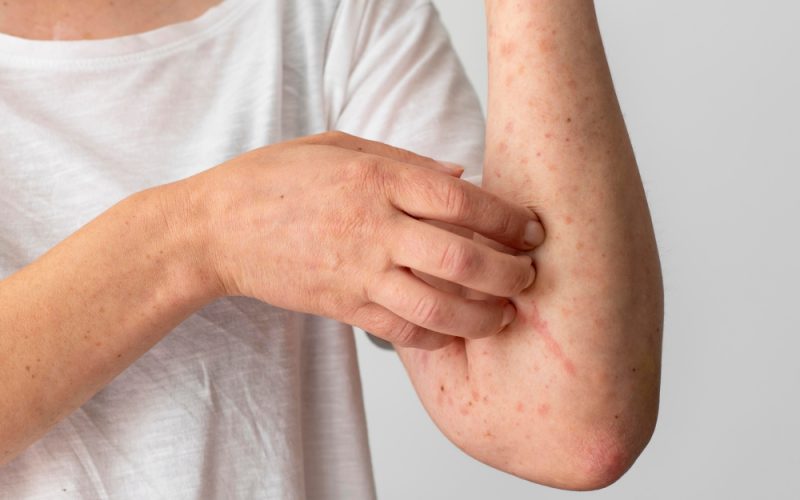Introduction
When people think of lupus, they often imagine a systemic condition that affects the entire body. But not all forms of lupus are the same. One of the most common and visible variations is discoid lupus, a type of cutaneous lupus that primarily affects the skin. For many, the journey begins with redness, rashes, or scarring lesions that seem to appear out of nowhere. Understanding the symptoms and causes of discoid lupus is essential for accurate diagnosis, prompt intervention, and effective management.
In this article, we’ll explore five common discoid lupus conditions you should know about, what they look like, why they happen, and how they affect patients’ lives. By the end, you’ll have a clearer picture of the different ways discoid lupus can present itself and the importance of seeking proper care.
What is Discoid Lupus?
Discoid lupus erythematosus (DLE) is a chronic autoimmune condition characterized by inflammation, resulting in sores or scaly patches, primarily on sun-exposed areas such as the face, scalp, and ears. Unlike systemic lupus erythematosus (SLE), discoid lupus usually remains confined to the skin, though in some cases it may progress.
The hallmark of DLE is the formation of coin-shaped lesions, which may leave permanent scars if left untreated. The condition is more common in women, especially those aged 20 to 40, and is strongly linked to both genetic and environmental triggers.
5 Common Discoid Lupus Conditions You Should Know About
1. Classic Discoid Lupus Lesions
The most well-known presentation of discoid lupus involves circular, inflamed patches on the face, scalp, and ears. These patches often start as red or purple raised areas that gradually thicken and become scaly.
Symptoms
- Coin-shaped lesions with clear borders
- Scaling and crusting on the surface
- Pigmentation changes (lighter or darker than surrounding skin)
- Risk of scarring or permanent hair loss when lesions occur on the scalp
Causes
The exact cause is unknown, but research suggests the immune system mistakenly attacks healthy skin cells. Triggers include:
- Sunlight exposure
- Hormonal fluctuations
- Genetic predisposition
- Stress or illness
For many patients, these lesions are the first and most noticeable sign of discoid lupus.
Also Read: How to Use a Medical Oxygen Cylinder Safely at Home?
2. Scalp Discoid Lupus (Scarring Alopecia)
When discoid lupus affects the scalp, it can result in a condition known as scarring alopecia. In this form, inflamed lesions can permanently damage hair follicles, resulting in patchy hair loss.
Symptoms
- Red or dark patches on the scalp
- Hair thinning or bald spots
- Itching or burning sensations
- Scarring in advanced cases
Causes
Sun exposure and immune dysfunction are key contributors; however, in some cases, trauma to the scalp or the use of harsh hair treatments can exacerbate the condition. Early diagnosis is critical because once follicles are destroyed, hair cannot regrow.
3. Hypertrophic Discoid Lupus
Hypertrophic discoid lupus is characterized by thick, wart-like lesions that can resemble psoriasis or warts, making diagnosis tricky.
Symptoms
- Thickened, raised lesions
- Scaly or crusted surface
- Lesions often appear on the arms, upper back, or face
- More prone to long-term scarring
Causes
The immune system’s overactive response drives excessive inflammation, leading to thickened skin growth. Sun exposure again plays a significant role, making protective measures, such as sunscreen, essential.
4. Pigmentary Discoid Lupus
This condition primarily affects individuals with darker skin tones, causing noticeable changes in pigmentation. Instead of red lesions, patients may see lighter or darker patches that persist long after inflammation subsides.
Symptoms
- Patchy lightening (hypopigmentation) or darkening (hyperpigmentation)
- Subtle scaly patches
- More visible in sun-exposed areas like the face and arms
Causes
Genetics and skin type influence how inflammation manifests. Even after active lesions have healed, pigmentary changes may persist, causing emotional distress and affecting self-esteem.
5. Mucosal Discoid Lupus
Less common but important, mucosal discoid lupus affects the mouth, lips, and sometimes the nose. These lesions can mimic other oral conditions, which often leads to misdiagnosis.
Symptoms
- Red patches or ulcers in the mouth
- Burning or pain while eating
- White, lace-like streaks on the mucosal surface
- Lesions on the lips that resemble cold sores but do not heal normally .
Causes
Autoimmune attack on mucosal tissue, combined with triggers such as smoking, sun exposure, or even dental irritation, can lead to this condition. Patients often struggle because oral lesions can interfere with eating and speaking.
How Are Discoid Lupus Conditions Diagnosed?
Dermatologists typically use a combination of physical exams, medical history, and skin biopsies to confirm discoid lupus. Because symptoms can mimic those of other skin conditions, such as psoriasis, eczema, or fungal infections, proper diagnosis and testing are vital.
Blood tests may also be ordered to rule out systemic lupus. However, not all patients with discoid lupus test positive for systemic lupus markers.
Treatment Approaches
Treatment focuses on reducing inflammation, preventing scarring, and minimizing flare-ups. Common approaches include:
- Topical corticosteroids: Reduce redness and inflammation.
- Calcineurin inhibitors: For sensitive areas, such as the face.
- Oral medications: Such as antimalarials like hydroxychloroquine, are often prescribed.
- Biologics and immunosuppressants: Used for severe or resistant cases.
- Photoprotection: Sunscreens, protective clothing, and limiting UV exposure are essential.
Lifestyle changes, including stress management and diet adjustments, also play a role in controlling flare-ups.
Living with Discoid Lupus
Managing discoid lupus goes beyond medications. Emotional well-being is just as important as physical care. Patients often face self-esteem challenges due to visible lesions, especially on the face. Support groups, counseling, and awareness of the condition can reduce stigma and provide much-needed encouragement.
Preventing Flare-Ups
While it may not be possible to prevent discoid lupus completely, patients can take proactive steps:
- Sun protection: Sunscreen and protective clothing are non-negotiable.
- Avoid triggers: Smoking, stress, and certain medications may worsen symptoms.
- Routine check-ups: Regular visits to a dermatologist allow for early intervention.
A healthy lifestyle, characterized by a balanced diet, adequate hydration, and quality sleep, can significantly improve immune health.
Why Awareness Matters
Discoid lupus can often be mistaken for more common skin conditions, which delays proper treatment. Awareness helps patients recognize early signs and seek medical care before permanent damage occurs. For example, scalp involvement can lead to irreversible hair loss if left untreated. Similarly, pigmentary changes may become permanent if not managed early.
Conclusion
Discoid lupus is a multifaceted condition that can present in different forms, from classic lesions to mucosal involvement. Knowing the symptoms and causes of discoid lupus is the first step toward effective treatment and prevention of long-term complications.
As research progresses, new treatments and therapies are emerging, offering patients greater hope for improved outcomes. If you or a loved one is struggling with discoid lupus, staying informed and proactive is key.
Ongoing studies continue to shed light on new therapies and potential cures. For those interested in advancing their treatment options and contributing to medical progress, it is worthwhile to find clinical trials for Cutaneous Lupus and discuss eligibility with your healthcare provider.










